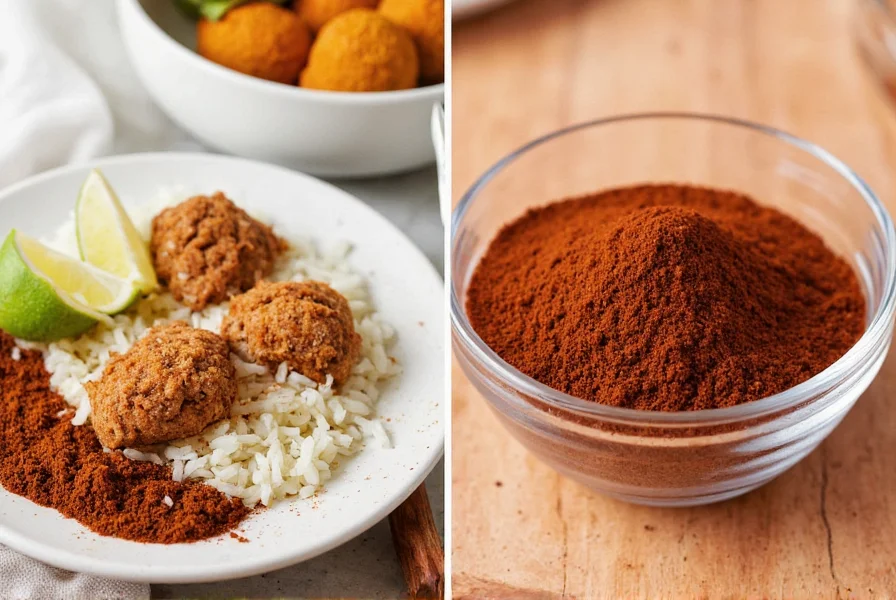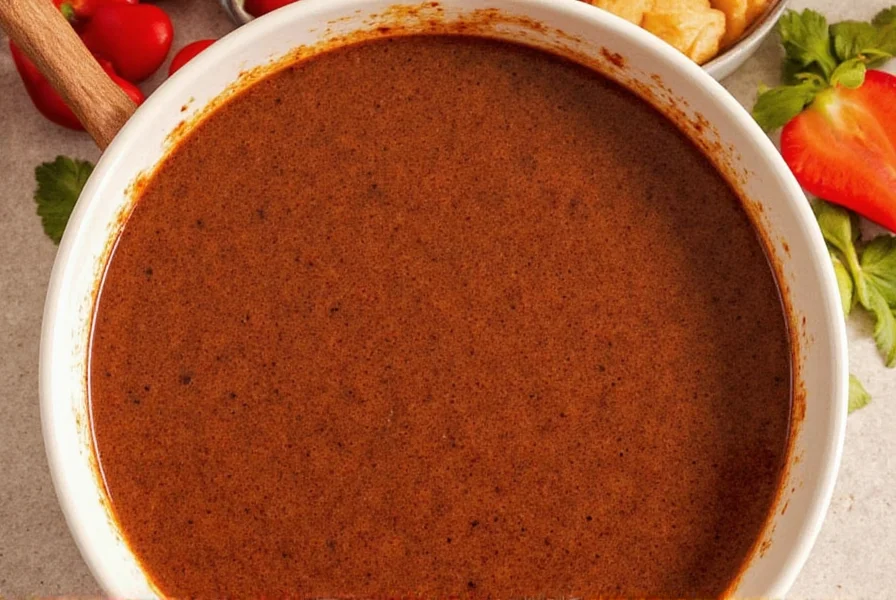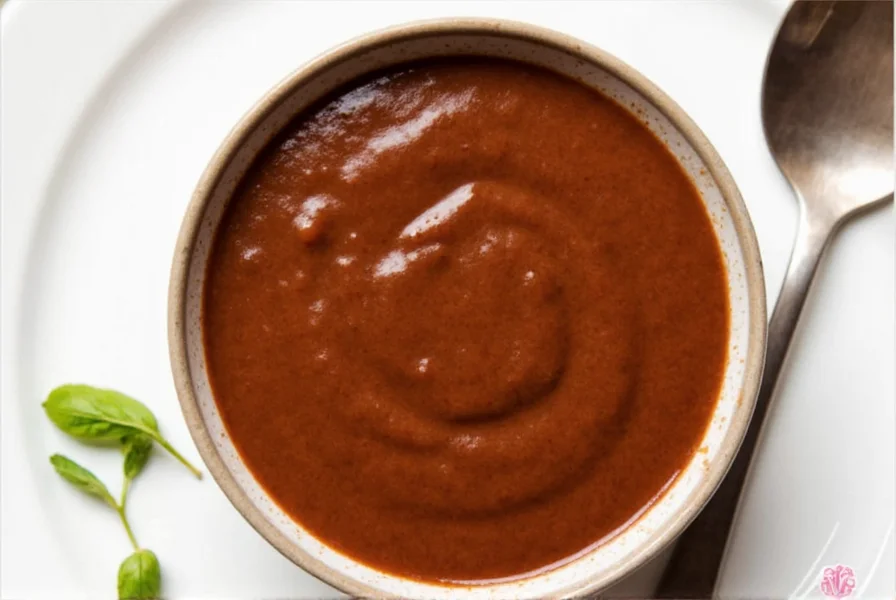Mole sauce definition: Mole (pronounced "moh-lay") is a complex Mexican sauce family originating from pre-Hispanic Mesoamerica, characterized by its layered blend of chiles, spices, nuts, seeds, and sometimes chocolate. The term comes from Nahuatl "molli," meaning "sauce" or "mixture," and represents one of Mexico's most culturally significant culinary traditions with regional variations across the country.
This comprehensive guide explains exactly what defines mole sauce, its historical roots, key ingredients, and how to identify authentic versions - answering your immediate "mole sauce definition" search with precision.
| Type | Flavor Profile | Key Ingredients | Best For |
|---|---|---|---|
| Mole Poblano | Rich, smoky, slightly sweet | Chile ancho, chocolate, cinnamon, sesame | Chicken, special occasions |
| Mole Verde | Herbaceous, bright, spicy | Tomatillos, cilantro, pumpkin seeds | Pork, tacos, enchiladas |
| Mole Negro | Deep, intense, almost burnt sugar notes | Dried chiles, plantains, chocolate | Oaxacan dishes, bold palates |
| Mole Amarillo | Spicy, fruity, tangy | Guajillo chiles, garlic, peanuts | Chicken tamales, soups |
| Mole Coloradito | Tomato-based, mildly spicy | Tomatoes, chiles, raisins | Fish, tamales, street food |
What Makes Mole Sauce Unique: Beyond the Basic Definition
Unlike typical sauces that rely on one or two dominant flavors, authentic mole achieves its distinctive character through:
- Ingredient complexity: Most traditional recipes contain 15-30 ingredients carefully balanced
- Layered preparation: Components are individually toasted, ground, and slowly simmered
- Cultural synthesis: Represents the fusion of indigenous Mesoamerican and Spanish culinary traditions

Historical Context: The Real Origins of Mole
While popular legend credits a 17th-century nun with accidentally creating mole poblano, archaeological evidence shows sauce-making traditions in Mesoamerica dating back to 300-600 BCE. Indigenous peoples combined native ingredients like:
- Chili peppers (more than 60 varieties in pre-Hispanic Mexico)
- Cacao (used in savory preparations, not just sweet)
- Wild herbs and seeds
- Tomatoes and tomatillos
Spanish colonization introduced new elements like almonds, cinnamon, and clove, creating the complex fusion we recognize today as mole.
Key Components That Define Authentic Mole
Understanding the mole sauce definition requires recognizing these essential elements:
1. The Chiles: Flavor Foundation
Each variety uses specific chile combinations that define its character:
- Dark moles: Ancho, mulato, pasilla
- Green moles: Fresh serrano, jalapeño, tomatillo
- Bright moles: Guajillo, árbol
2. Texture Elements: Thickening Agents
Traditional mole uses natural thickeners rather than flour or cornstarch:
- Stale bread or tortillas
- Plantains or bananas
- Nuts and seeds (almonds, peanuts, sesame)
3. Flavor Enhancers: The Secret Layers
These ingredients create mole's distinctive complexity:
- Spices: Cinnamon, clove, anise (Spanish influence)
- Fruits: Raisins, plantains (adds subtle sweetness)
- Chocolate: Only in specific varieties like Poblano and Negro
| Certification | Authentic Indicator | What to Look For | Avoid If... |
|---|---|---|---|
| Mexican Denomination of Origin | Mole Poblano de Oaxaca | Seal from Mexican government certifying regional origin | No official certification seal |
| Ingredient Analysis | Traditional composition | 15+ natural ingredients without preservatives | Short ingredient list or artificial additives |
| Preparation Method | Slow-simmered | Preparation time mentioned (traditional takes 4+ hours) | "Quick" or "instant" preparation claims |
How to Identify Authentic Mole Sauce: Practical Guide
When evaluating products or recipes, use these criteria to determine authenticity:
Visual Indicators
- Color: Should be rich and deep (not artificially uniform)
- Texture: Slightly coarse from hand-ground ingredients (not perfectly smooth)
- Oil separation: Small amount of natural oil separation is normal
Ingredient Analysis
Authentic mole should contain:
- Multiple chile varieties (not just one)
- Natural thickeners (nuts, seeds, bread)
- Traditional spices (not generic "taco seasoning")
- Chocolate only in specific varieties (Poblano, Negro)
Mole Sauce Definition: Common Misconceptions
Understanding what mole is requires clarifying what it's NOT:
Mole vs. Guacamole
Despite the similar name, guacamole ("avocado sauce" in Nahuatl) is completely different - a fresh avocado dip with lime and cilantro, not a complex cooked sauce.
Mole vs. Adobo
Adobo is a simpler marinade or sauce focused primarily on vinegar and chiles, lacking mole's complexity of ingredients and preparation.
Mole vs. Commercial "Mexican" Sauces
Many products labeled "mole" in supermarkets are simplified versions that miss key elements of authentic preparation.

Practical Applications: Using Mole Correctly
Traditional usage differs from common misconceptions:
- Not a dipping sauce: Authentic mole is served as a coating for meats or in enchiladas
- Temperature matters: Should be served warm, not hot, to appreciate complex flavors
- Proper portion: A thin layer (1/4 inch) is traditional, not drowning the food
Frequently Asked Questions About Mole Sauce Definition
What is the exact definition of mole sauce?
Mole sauce is a complex Mexican culinary preparation defined by its multi-ingredient composition (typically 15-30 components), slow-cooked preparation method, and distinctive fusion of indigenous Mesoamerican and Spanish influences. The word comes from Nahuatl "molli," meaning "sauce" or "mixture," and represents a family of sauces rather than a single recipe, with each Mexican region having distinctive variations.
How is traditional mole different from commercial versions?
Authentic mole requires extensive preparation: individual toasting of ingredients, stone grinding, and slow simmering (4+ hours). Commercial versions often use pre-ground spices, artificial thickeners, and shortcuts that compromise flavor complexity. Traditional mole contains natural oil separation and slight texture variation, while commercial versions are typically uniform and smooth.
What are the mandatory elements in a true mole sauce?
All authentic moles must contain: 1) Multiple chile varieties forming the flavor base, 2) A thickening agent (nuts, seeds, or bread), 3) Aromatic spices, 4) Slow-cooked preparation method. Chocolate is NOT required - it only appears in specific regional varieties like Poblano and Negro. The defining characteristic is complexity of ingredients and preparation, not chocolate content.
Why is mole considered Mexico's national sauce despite regional variations?
Mole represents Mexico's cultural synthesis - the blending of indigenous ingredients and techniques with Spanish influences. While regional variations exist (Oaxaca has seven traditional moles, Puebla has the famous Poblano), they all share the core characteristics of complex ingredient combinations and labor-intensive preparation. This diversity within a unifying concept mirrors Mexico's regional cultural diversity within national identity.
Key Takeaways: Understanding Mole Sauce Definition
Mole isn't just "chocolate sauce" as many mistakenly believe. Its true definition centers on:
- Complex ingredient composition (15-30 components)
- Distinct preparation method involving toasting and slow cooking
- Regional variations across Mexico
- Cultural significance as a symbol of Mexican culinary heritage
When searching for "mole sauce definition," remember that chocolate appears only in specific varieties - the presence of chocolate does not define mole, but rather the intricate combination of ingredients and traditional preparation methods.











 浙公网安备
33010002000092号
浙公网安备
33010002000092号 浙B2-20120091-4
浙B2-20120091-4